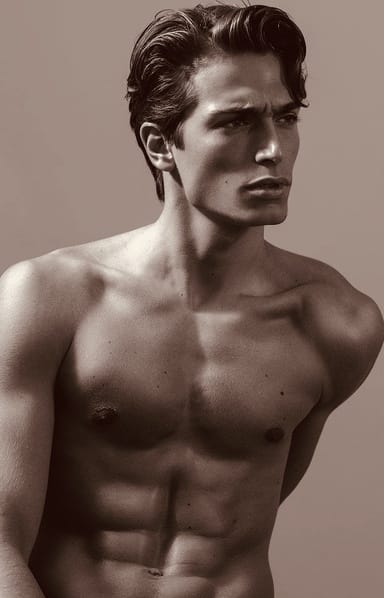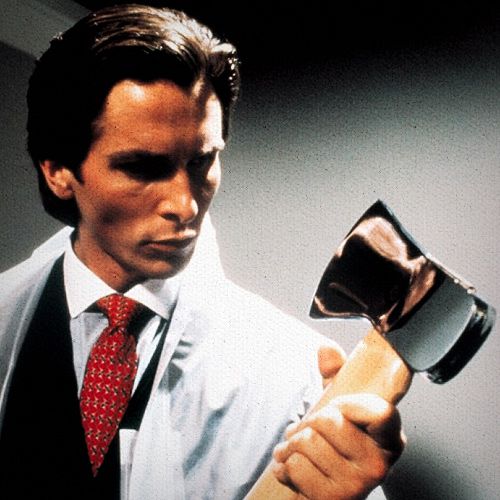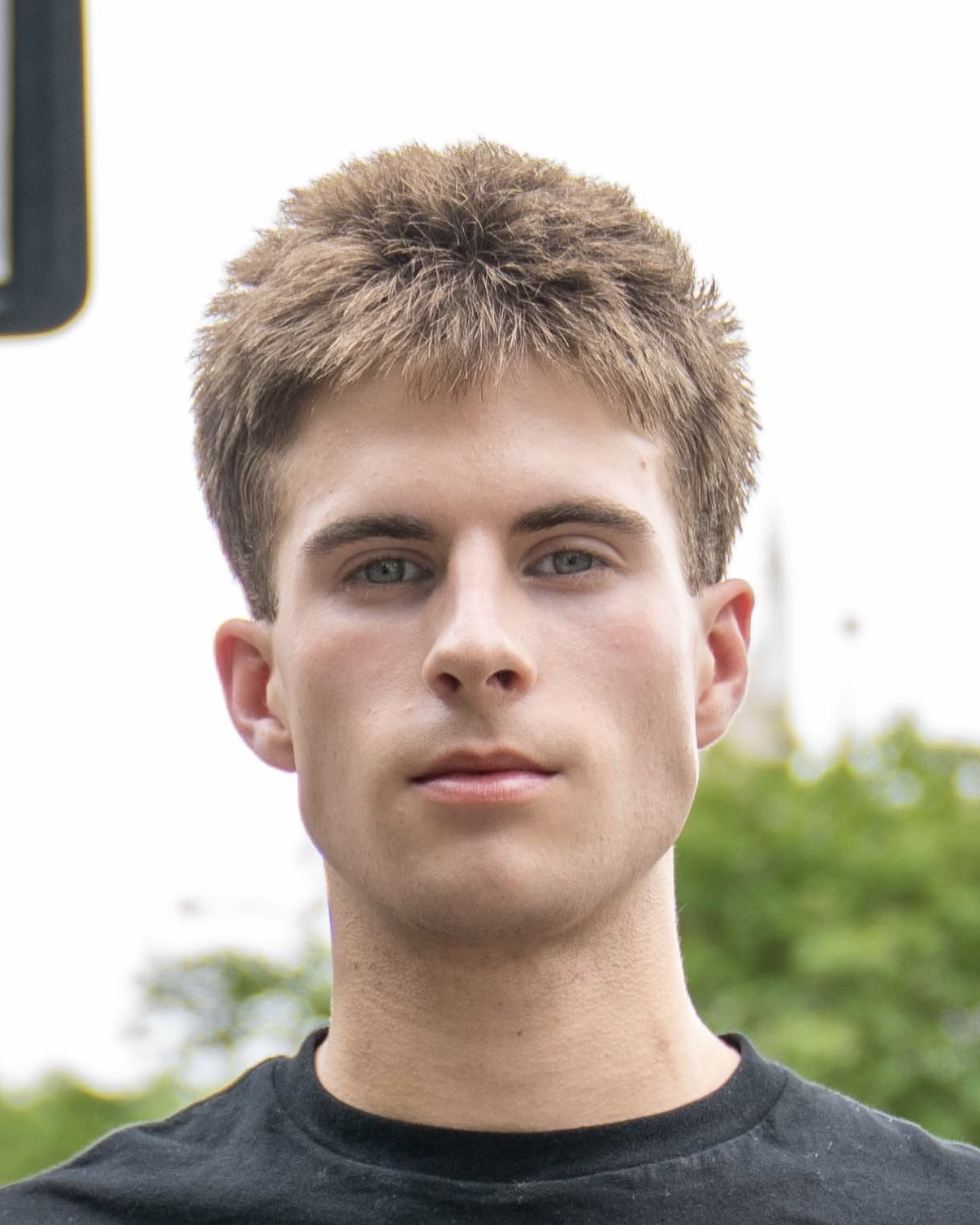darktriadcel
Iron
- Joined
- Jul 17, 2024
- Posts
- 31
- Reputation
- 115
Contrary to popular belief, there aren’t just one or two types of “hollow cheeks.”
There are two main types of hollow cheeks:
Outer Hollow Cheeks (lighting-based)
Inner Hollow Cheeks (structural-based)
Each has two subtypes, depending on the depth of the canine fossa and the projection of the midface.
Main Types
1. Outer Hollow Cheeks
• The typical “model” V-contour.
• Formed by shallow canine fossa, fuller midface, and strong zygos.
• Creates angular, aesthetic contours—especially visible under indoor directional lighting (e.g. overhead light in a dark room).
• Cheeks are not truly sunken—hollows are mostly the result of light and bone structure.
Looks like: Fashion models, actors, symmetrical faces with forward growth.
2. Inner Hollow Cheeks
• Found in individuals with a flatter maxilla or sunken midface.
• Cheeks appear truly sunken inward, especially under natural outdoor lighting, where light reflects across flat surfaces and emphasizes depth.
• Depth is structural, not lighting-based.
Looks like: Primal, fierce, or tired depending on context. Often high contrast and sharp.
Three Core Rules of Hollow Cheek Anatomy
1. Flatter Maxilla = More Sunken Cheeks
Less forward projection = inward cheek collapse
2. More Zygomatic Mass = More Shadow Bone Contrast
Bigger cheekbones = more shadow contrast under the bone
3. Less Facial Fat = More Definition
Lower fat = bone structure becomes visible = more prominent/defined sunken/hollow cheeks
How Lighting Affects Hollow Cheeks
1. Outer Hollow Cheeks (Lighting-Dependent)
2. Inner Hollow Cheeks (Structure-Dependent)
The 4 Hollow Cheek Types
1. Shallow Canine Fossa (Common Outer Hollow)



• Midface looks full and connected
• V-shaped contour from light + bone, not from actual hollowness
• Cheeks aren’t truly sunken—just well-defined under good lighting
Vibe: Clean, symmetrical, modelesque
Overall: Gives a refined, high-fashion look—classic beauty that photographs well under directional light
2. Deep Canine Fossa (Uncommon Outer Hollow)



• Cheekbones pop due to lack of connection to lower maxilla
• Extra depth and shadow even in neutral light
• Slight mouth protrusion creates a primal, predatory look
Vibe: Sculptural, powerful, mythic
Overall: Gives a primal, heroic and dominant “Greek God statue” look—striking and bold under any lighting
3. Shallow Canine Fossa + Flatter Maxilla (Rare inner hollow)



• Midface appears slightly sunken, but still has that clean V-contour
• Depth from both light and bone recession
• Balanced structure with hidden depth
• Cheeks are sunken inwards
Vibe: Delicate, elegant, quietly sharp
Overall: Gives a rare hybrid look—aesthetic and defined with underlying depth
4. Deep Canine Fossa + Flatter Maxilla (Rare Inner Hollow)




• Maxed-out hollowing: deep-set cheeks, sunken midface, protruding zygos
• Intense contrast and depth
• Creates a fierce, primal appearance under almost any lighting
• cheeks are sunken inwards
Vibe: Dark, primal, high-contrast
Overall: Gives an intense, otherworldly appearance—predatory, lean, and visually commanding
My own opinion:
Outer hollow cheeks aren’t truly “hollow” they’re more like a bone-based optical illusion. Even some people with higher body fat can show this V-contour under certain good lighting, if they have strong enough zygos.
True hollow cheeks come from anatomical depth, not just shadows. That’s why inner hollows (flat maxilla, sunken midface) are in my opinion more real proper sunken/hollow cheeks
Which do you think is the most aesthetic?
Which is do you think is the rarest?
Which do you think is the most unique?
Lastly,
which do you guys have ?
There are two main types of hollow cheeks:
Outer Hollow Cheeks (lighting-based)
Inner Hollow Cheeks (structural-based)
Each has two subtypes, depending on the depth of the canine fossa and the projection of the midface.
Main Types
1. Outer Hollow Cheeks
• The typical “model” V-contour.
• Formed by shallow canine fossa, fuller midface, and strong zygos.
• Creates angular, aesthetic contours—especially visible under indoor directional lighting (e.g. overhead light in a dark room).
• Cheeks are not truly sunken—hollows are mostly the result of light and bone structure.
Looks like: Fashion models, actors, symmetrical faces with forward growth.
2. Inner Hollow Cheeks
• Found in individuals with a flatter maxilla or sunken midface.
• Cheeks appear truly sunken inward, especially under natural outdoor lighting, where light reflects across flat surfaces and emphasizes depth.
• Depth is structural, not lighting-based.
Looks like: Primal, fierce, or tired depending on context. Often high contrast and sharp.
Three Core Rules of Hollow Cheek Anatomy
1. Flatter Maxilla = More Sunken Cheeks
Less forward projection = inward cheek collapse
2. More Zygomatic Mass = More Shadow Bone Contrast
Bigger cheekbones = more shadow contrast under the bone
3. Less Facial Fat = More Definition
Lower fat = bone structure becomes visible = more prominent/defined sunken/hollow cheeks
How Lighting Affects Hollow Cheeks
1. Outer Hollow Cheeks (Lighting-Dependent)
- Rely heavily on directional light to create the illusion of hollowness.
- Strong cheekbones + shallow canine fossa catch light on top and cast shadow beneath.
- Overhead lighting (like in a dim room with a spotlight or downlight) creates that V-shaped contour.
- In flat, diffused light (like cloudy daylight), these hollows often disappear or soften.
- You’ll often see them more in selfies, runway lighting, and photo studios—because the lighting is designed to sculpt the face.
2. Inner Hollow Cheeks (Structure-Dependent)
- These appear sunken regardless of lighting because they’re built into the facial structure:
- Flat maxilla
- Sunken midface
- Low facial fat
- In outdoor lighting or natural light, the flatness of the midface causes more shadows to spread across the cheeks, making them appear even more hollow.
- Soft frontal light won’t eliminate the depth because the actual bone and tissue structure creates real volume loss.
- Even under soft beauty lighting, there’s usually visible depth under the cheekbone.
- Think: “Gaunt” or “deep-set” cheek hollows that never fully go away.
The 4 Hollow Cheek Types
1. Shallow Canine Fossa (Common Outer Hollow)



• Midface looks full and connected
• V-shaped contour from light + bone, not from actual hollowness
• Cheeks aren’t truly sunken—just well-defined under good lighting
Vibe: Clean, symmetrical, modelesque
Overall: Gives a refined, high-fashion look—classic beauty that photographs well under directional light
2. Deep Canine Fossa (Uncommon Outer Hollow)



• Cheekbones pop due to lack of connection to lower maxilla
• Extra depth and shadow even in neutral light
• Slight mouth protrusion creates a primal, predatory look
Vibe: Sculptural, powerful, mythic
Overall: Gives a primal, heroic and dominant “Greek God statue” look—striking and bold under any lighting
3. Shallow Canine Fossa + Flatter Maxilla (Rare inner hollow)



• Midface appears slightly sunken, but still has that clean V-contour
• Depth from both light and bone recession
• Balanced structure with hidden depth
• Cheeks are sunken inwards
Vibe: Delicate, elegant, quietly sharp
Overall: Gives a rare hybrid look—aesthetic and defined with underlying depth
4. Deep Canine Fossa + Flatter Maxilla (Rare Inner Hollow)




• Maxed-out hollowing: deep-set cheeks, sunken midface, protruding zygos
• Intense contrast and depth
• Creates a fierce, primal appearance under almost any lighting
• cheeks are sunken inwards
Vibe: Dark, primal, high-contrast
Overall: Gives an intense, otherworldly appearance—predatory, lean, and visually commanding
My own opinion:
Outer hollow cheeks aren’t truly “hollow” they’re more like a bone-based optical illusion. Even some people with higher body fat can show this V-contour under certain good lighting, if they have strong enough zygos.
True hollow cheeks come from anatomical depth, not just shadows. That’s why inner hollows (flat maxilla, sunken midface) are in my opinion more real proper sunken/hollow cheeks
Which do you think is the most aesthetic?
Which is do you think is the rarest?
Which do you think is the most unique?
Lastly,
which do you guys have ?
Last edited:


 idk why I did this bro
idk why I did this bro
